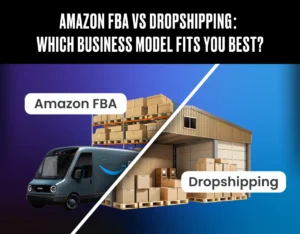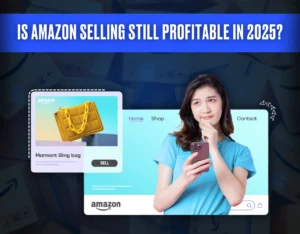The contrast between Amazon Vendor Central vs Seller Central is among the leading confusions brands face in 2025. Vendor Central works on a wholesale model where Amazon buys and resells your products. While Seller Central lets you sell directly to customers with full control over pricing and branding.
Understanding these models is crucial because over 60% of Amazon’s retail sales now come from independent third-party sellers. In this guide, we’ll compare the two side by side and help you decide which platform fits your business best.

Part 1. Amazon Vendor Central vs Seller Central: Side-by-Side Comparison Table
Here’s a comparison of key factors between Amazon Vendor Central and Amazon Seller Central to illustrate differences in a quick overview:
| Aspect | Vendor Central (1P) | Seller Central (3P) |
| Access | Invite-only, Amazon selects brands | Open to all sellers |
| Seller of Record | Amazon (Sold by Amazon) | You (Sold by Your Brand) |
| Pricing | Amazon controls retail prices | You control retail prices |
| Fulfillment | Ship bulk to Amazon; they fulfill orders | Choose FBA, FBM, or SFP |
| Advertising | Vine, Subscribe & Save, co-op marketing options | Sponsored Products, Brands, Display, promos |
| Analytics | Limited data, relies on Amazon forecasts | Full sales, customer, and brand analytics |
| Pros | Bulk orders, Prime badge, credibility | Pricing control, higher margins, more data |
| Cons | Lower margins, strict terms, no pricing control | More competition, fees, and operational workload |
Part 2. What is Amazon Vendor Central?
Amazon Vendor Central is an invite-only platform for first-party (1P) selling on Amazon. In this model, you become a wholesale supplier to Amazon. You receive purchase orders from Amazon and ship your products in bulk to Amazon’s fulfillment centers. Amazon then sells those products to shoppers as the retailer of record.
Vendor Central is typically offered to established brands, manufacturers, or distributors with strong sales performance. For shoppers, items sold via Vendor Central show “Ships from and sold by Amazon”, which can increase trust in the product.
Pros
- Amazon purchases inventory in large quantities, reducing your need to chase individual sales.
- Products carry Amazon’s name, which boosts customer confidence and conversions.
- Less operational overhead compared to running a Seller Central account.
Cons
- Typical payment terms are net 60-90 days, affecting cash flow.
- Amazon can reduce or stop purchase orders suddenly, directly impacting your sales volume.
Part 3. What is Amazon Seller Central?
Amazon Seller Central is the web platform for third-party (3P) sellers to sell directly to Amazon’s customers on the marketplace. As a Seller Central user, you act as the retailer where you list products, set your prices, and are responsible for fulfilling orders. Products sold via Seller Central are labeled as “Sold by Your Store and fulfilled by Amazon” (if FBA) or “Ships from and sold by Your Store” (if FBM).
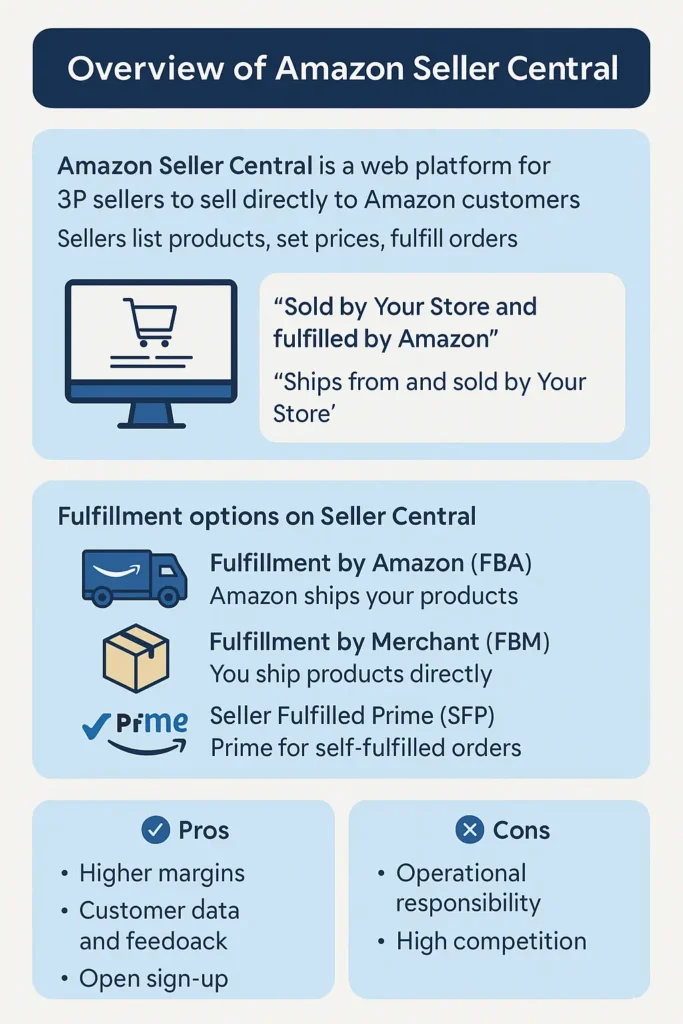
Fulfillment options on Seller Central
One option is that you can use Fulfilled By Amazon (FBA), sending inventory to Amazon’s warehouses so Amazon handles shipping, Prime delivery, etc. Alternatively, Fulfilled By Merchant (FBM) means you list on Amazon but ship the product to each customer yourself (or via a 3PL), handling customer service directly.
For those who want Prime but self-fulfill, Seller Fulfilled Prime (SFP) is a program allowing FBM with a Prime badge. This flexibility lets sellers choose how to balance cost, control, and customer experience on each order.
Pros
- Higher margins since you sell directly at retail, with no wholesale discount to Amazon.
- Access to customer data and feedback for marketing and product development.
- Accessible entry point for small and medium businesses with open sign-up.
Cons
- Operational responsibility for fulfillment, shipping, returns, and account compliance.
- High competition from other sellers and even Amazon itself, driving prices down.
Part 4. Control Over Pricing: Seller Central vs Vendor Central
In Seller Central, you maintain full control over your retail prices. You decide the listing price for your product and can adjust it in real time based on market conditions, costs, or strategy. For example, if costs rise, a seller can increase their Amazon price to maintain profitability.
How Amazon uses real-time data & dynamic pricing to adjust prices, increase margins, and stay competitive in the eCommerce market
In Vendor Central, pricing power is surrendered to Amazon. You sell your product to Amazon at an agreed wholesale cost but Amazon alone decides the consumer retail price on its website. Amazon uses automated algorithms to price products competitively. For instance, Amazon might potentially cause margin erosion if a competitor outside Amazon lowers their price.
With supply chain costs in flux in the current market, control over pricing Seller vs Vendor Central is a significant factor in deciding between the two platforms.
Part 5. Amazon Vendor Central vs Seller Central Advertising Options
Both Vendor and Seller Central provide access to Amazon’s powerful advertising ecosystem, but there are some differences in tools and programs available:
Advertising for Vendors
Vendors run ads through Amazon’s advertising console. Products sold by Amazon often gain extra visibility and appear in Amazon’s Choice badges. Vendors also get access to special programs such as:
- Amazon Vine (send units to reviewers to generate verified reviews).
- Subscribe & Save (encourage repeat purchases on consumables with subscription discounts).
Vendors may also negotiate co-op marketing deals with Amazon for premium placements (e.g., emails or gift guides). While these benefits can boost credibility and sales, vendors have limited control over how and when Amazon promotes their products.
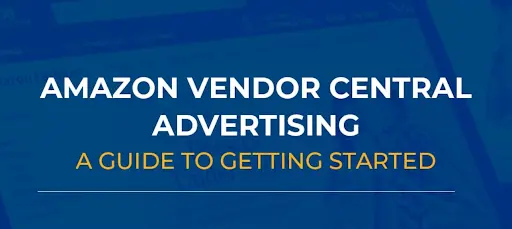
Advertising for Sellers
Seller Central provides a self-service ad console, where sellers directly manage:
- Sponsored Products (ads on search results and product pages).
- Sponsored Brands (banner-style ads for brand-registered sellers).
- Sponsored Display (retargeting and product-targeting ads).
Sellers can also run promotions like Coupons, Lightning Deals, and Promo Codes. In recent years, sellers gained access to Vine and Subscribe & Save (if eligible), closing the gap with vendor perks.The difference is that sellers must budget, optimize, and manage ads themselves, but this also means they control targeting, spend, and campaign timing. You can navigate through this growth-driving guide for optimum advertising management.
Part 6. Analytics and Data: Vendor Forecasting vs Seller Analytics
Data transparency is another major differentiator between Vendor Central and Seller Central. Let’s discuss how these two differ in analytics and data aspects:
Vendor Central Forecasting
As a Vendor, your focus is on B2B forecasting because Amazon is your customer. So you’re concerned with how much inventory Amazon will order. Amazon’s systems generate purchase orders, typically based on their algorithms forecasting consumer demand.
However, vendors don’t get the same granular view of actual consumer behavior on Amazon. By default, Vendor Central provides Amazon Retail Analytics (ARA) dashboards with basic metrics: e.g. how many units Amazon sold of your product, inventory levels at Amazon, maybe some performance metrics. For deeper insights (like drill-downs into customer segments or detailed market trends), Amazon historically offered ARA Premium at an extra cost.
Amazon Seller Central Analytics Tools
As a Seller, you have a wealth of analytics at your fingertips in Seller Central. You can track each unit sold, see real-time orders, and crucially, access customer data for each order. Moreover, brand owners on Seller Central gain Brand Analytics, which provides insights like top search terms and how your products rank, market basket analysis, and even demographic data of purchasers.
These tools enable a seller to do sophisticated demand forecasting and marketing optimization. For example, if sales are trending up and conversion rates are high, a seller knows to send more stock to FBA to prevent stockouts. Seller Central also provides inventory planning tools that forecast future demand based on your own sales history and seasonality, helping you manage FBA restock quantities. A complete guide to using Amazon Seller Central reports to analyze performance, spot trends, and make data-driven business decisions
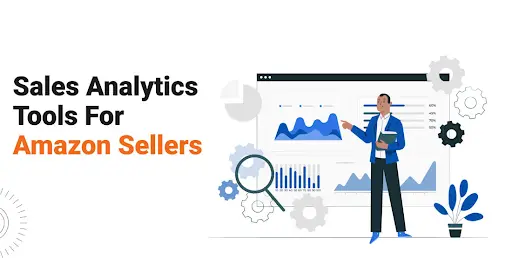
Part 7. Hybrid Amazon Strategy: Using Seller Central + Vendor Central Together
What if a business could get the best of both worlds? That’s where a hybrid Amazon strategy comes in, using both Vendor Central and Seller Central simultaneously. In a hybrid model, a brand might sell some product lines or SKUs via Vendor Central (1P) while also maintaining a Seller Central account (3P) for other products or markets.
Benefits of a hybrid strategy
- Flexibility: Split products between Vendor Central and Seller Central based on volume and control needs.
- Maximized reach: Use Vendor Central for bulk items and Seller Central for high-margin products.
- Cost savings: Reduce warehousing and shipping costs for bulky items by letting Amazon manage fulfillment.
- Agility for new products: Test limited-edition products through Seller Central, where you can launch quickly and adjust pricing.
- Balanced risk: Combining both models helps offset the weaknesses of relying on just one channel.
Challenges of hybrid selling
- Strain with Amazon: If Amazon sees you competing with their retail offer, it may affect your Vendor relationship.
- Resource requirements: Many companies need separate teams or external agencies to manage hybrid operations effectively.
Part 8. Which Amazon Platform is Right for Your Business in 2025?
The choice between Amazon Vendor Central vs Seller Central depends on your business’s goals and priorities. Here are a few considerations to further guide your decision:
- Desire for Control vs. Convenience: Seller Central is likely the better fit if retaining control over pricing is your top priority. While Vendor Central could work if you want Amazon to handle the heavy lifting.
- Business Size & Brand Maturity: Emerging businesses almost always start on Seller Central because it’s scalable as you grow. Vendor Central might complement your strategy for mass exposure.
- Financial Considerations: Evaluate your margin structure and cash flow. If it is tight, Seller Central’s faster payouts are advantageous.
- Operational Capabilities: Vendor Central fits better if your company lacks logistics infrastructure. Seller Central lets you extend that onto Amazon relatively easily for a huge e-commerce operation.
Comprehensive Amazon Aggregators Guide for Sellers, Learn how FBA brand valuations work, what buyers look for, and steps to prepare your business for sale.
Conclusion
Amazon Vendor Central vs Seller Central comes down to your preference between convenience and control. Vendor Central suits large brands that want bulk orders and Amazon-managed operations. Seller Central empowers businesses of all sizes with full control over pricing and branding.
Many brands even adopt a hybrid approach to balance reach and flexibility now. Ultimately, the right platform is the one that matches your business model with strategy and continuous optimization.
FAQs
Q1. Can I have both a Vendor Central and Seller Central account at the same time?
Yes, you can have both a Vendor Central and Seller Central account, which is called a hybrid model. Many brands use Vendor Central for high-volume products and Seller Central for niche or higher-margin items.
Q2. How do I get invited to Amazon Vendor Central?
You can get invited to Amacon Vendor Central by expressing interest to Amazon’s vendor team. However, acceptance is not guaranteed and depends on your category and performance. Building a successful track record on Seller Central is the best way to increase your chances of receiving an invitation.
Q3. What are the fee differences between Vendor Central and Seller Central?
As per the fee structure, Seller Central charges a $39.99/month subscription (Professional plan), plus referral fees averaging 15% per sale. Vendor Central has no set fee schedule but works on wholesale pricing, where Amazon often deducts allowances from payments.



